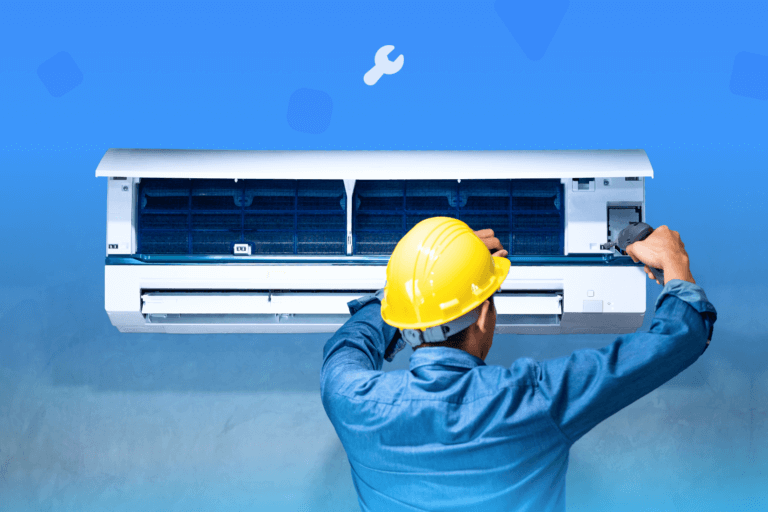The use of these CMMS optimizes maintenance tasks, improves equipment management, reduces the failure rate and increases the overall safety of the processes. All this translates into better competitiveness and market positioning.
Every company or organization is built on the basis of different processes, in which participate each of their respective units, departments or divisions.
One of the areas that develops the most complex tasks is maintenance, since it depends on the company maintaining a continuous and efficient rate of operation.
To meet this objective, their teams need to implement complex administrative and technical processes, which range from inspection and repair of machinery or critical infrastructure, to document and file management.
All of this implies a conjunction of highly diverse tasks, which must come together along a single path, which significantly reduces the ability to achieve maximum efficiency.
Especially if management systems depend on obsolete or outdated tools, such as paper forms.
For this reason, companies that aspire to position themselves in a more competitive position in the market have chosen to guide their maintenance processes through advanced, safe and reliable digital tools. Among these, stands out Computer Aided Maintenance Management software, or CMMS.
What are CMMS and what functions do they perform?
Technically, CMMS (Computerized Maintenance Management System) are programs that store and manage specialized computer databases. They store all the information on a company’s assets, as well as the respective maintenance operations carried out on them.
The main objective of CMMS programs is to collect and organize all the information required by the department and the professionals in charge of maintenance tasks, so that they efficiently fulfill their tasks and objectives.
For example, it helps them determine which machines need preventive or predictive maintenance, and which spare parts are needed more or less urgently, among many other variables.
In addition, CMMS provide company management with accurate reports that help them make better strategic decisions. For example, better allocate or redistribute the resources necessary to implement a preventive maintenance program for each piece of machinery.
In this way, implementing a CMMS program facilitates the development of maintenance processes and helps to achieve greater efficiency and control of the company’s assets.
How does a CMMS work?
The main core of all CMMS software is its database. This organizes all existing information on a company’s assets and makes it available to maintenance department professionals.
This makes it possible to maintain a centralized record of the status of equipment and tools, as well as carry out adequate monitoring of the life cycle of each of these assets.
It is also possible to schedule and supervise all maintenance activities, by drawing up a detailed list of all the work done and to be done.
What type of operations is a CMMS used for?
Based on the information stored in this database, the CMMS software provides support to carry out a series of critical operations for the company. Among these are the following:
Preventive Maintenance
It is the most important module of a CMMS solution, since it allows programming and periodic monitoring of the maintenance tasks of a company’s assets. This is vital to prevent failures or breakdowns that can stop and alter the production process.
Thanks to the CMMS systems, the frequency of maintenance is scheduled and, at the same time, the associated work orders are automated. This streamlines and optimizes the corresponding allocation of technical and human resources for this vital task.
Work order management
It is another of the main functionalities of a CMMS program, since it translates into a significant improvement in the management of maintenance teams.
A fundamental part of this advantage is due to the time savings derived from the digitization of work orders (WO).
In any CMMS program, work order management includes the following functionalities:
- Automate the generation of work orders.
- Reserve materials and equipment.
- Schedule and assign work teams and shifts.
- Review the status of the equipment and monitor downtime, in case of failure or breakdown.
- Record planned and actual expenses.
- Incorporate documentation associated with the database, such as repair manuals and safety procedures.
All this information is stored in the database of the CMMS program. In this way, maintenance managers can view the resources assigned to each WO, and know what state they are in.
Asset register
CMMS software can store and share critical information on equipment, machine parts, and specialized tools, including aspects such as:
- Manufacturer, model, serial number, class and type of equipment.
- Associated manufacturing codes.
- Location and warehouse stocks.
- Performance and idle time statistics.
- Maximum periods of useful life.
- Factory warranties.
- Planned replacements and repairs.
- Calibrations.
- Repair manuals, safety procedures and equipment guarantees on digital paper, audio or video (as required by each company).
Resource and labor management
The database of a CMMS program can store all the information of each member of a company’s maintenance team, specifying their skills, competencies and knowledge.
This makes it possible to more efficiently manage the assignment of equipment and work shifts; since it ensures that each maintenance operation is in accordance with the competencies of the personnel in charge.
Materials and inventory management
The CMMS software also has a module dedicated to the inventory, distribution and recovery of equipment and materials. This makes it possible to improve stock control and expenses associated with the replacement of materials, spare parts and tools.
Likewise, it optimizes the replenishment of supplies, guaranteeing that they are always available. This translates into time savings and reduced equipment downtime.
Reports, analysis and audit
CMMS programs allows us to generate reports on all stages of the maintenance process, including important variables such as asset availability, use of materials, and labor and input expenses, among other variables.
In this way, maintenance supervisors have better tools to analyze the information available on inspections and repairs, which improves their ability to make strategic decisions in the field.
Likewise, CMMS applications help to collect and organize all the information necessary to successfully face any internal or external audit.
What are the main advantages of a CMMS software?
A CMMS maintenance program allows companies to have precise control of the state of assets and critical productive infrastructure of the company.
In this way, the issuance and monitoring of work orders in real time allows the implementation of an agile and effective maintenance strategy. All of which translates into the constant optimization of the performance and productivity of the entire organization.
All these general benefits are broken down into the following specific advantages:
1. Asset performance optimization
CMMS software stores all the key information of critical assets, such as brand, model, serial number, class and type of each piece of equipment or machinery. In this way, maintenance personnel effectively know what task to perform during an inspection or repair.
2. Reduced downtime
Each unforeseen failure or damage generates high costs for companies, both in resources and in public image and reputation.
The use of a CMMS program minimizes any risk derived from these unforeseen stops, based on the optimization of preventive or predictive maintenance tasks (according to the needs of each company).
3. Improves the effectiveness of maintenance teams
CMMS software provides access to a large amount of valuable information stored in its databases. This allows maintenance teams to quickly respond to work orders, providing a more agile, efficient and timely service.
In the same way, CMMS software has valuable historical information on each asset. This makes it possible to trace certain “performance trends” and optimize the frequency of maintenance, according to said information.
Consequently, we can prevent any unexpected failures that could lead to high costs for the company.
4. Increased security
The improvement in equipment maintenance tasks also translates into better compliance with occupational safety standards.
This makes it possible to significantly reduce accidents due to equipment failures, guaranteeing a safer work environment for both maintenance operators and other company collaborators.
5. Improvement in task planning
CMMS software allows us to schedule regular maintenance inspections. This avoids the appearance of unexpected failures and reactive repairs that usually have a high cost.
Consequently, we can extend the useful life of the equipment and reduce the associated costs.
How do we know if our company needs a CMMS program?
Each of these exposed variables demonstrates that investing in a CMMS program offers numerous competitive advantages. Not only we will improve maintenance operations, but we will also increase the safety and efficiency of the entire company.
But if there is still some degree of doubt, just ask yourself the following questions:
- How many unplanned equipment failures happen in a year?
- How much productivity time is lost for this reason?
- How many resources are wasted due to these contingencies?
- How long does maintenance work take, if work orders are still issued on paper?
- How many economic losses are derived from all these factors?
- How much competitiveness is lost?
Overcoming these negative factors, through the use of a CMMS program, is, without a doubt, the key to the success of companies in an increasingly demanding and competitive market.
If you need to implement a modern, agile and efficient CMMS program, DataScope offers you a precise, customizable and accessible management tool, with which you will be able to determine the main operational and management needs of your maintenance teams.
Through an advanced system of electronic checklists, you can simplify the issuance, application and follow-up of work orders, integrating them with a wide range of other applications, so that maintenance operators can carry out their work in a more agile and efficient way.







